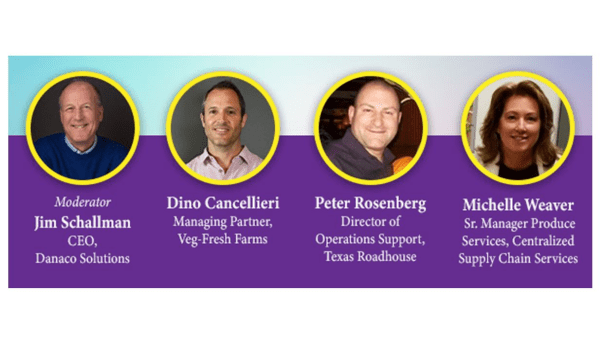While they didn’t dare use the term “new normal” to describe the conditions in the foodservice industry, several leaders said to expect things to look like this for a while.
They spoke on the final webinar in the United Fresh BB #:145458 Reimagine series June 30 that was titled, “What keeps you up at night?”
“It’s labor but many input costs are up,” said Michelle Weaver, Sr. Manager Produce Services, Centralized Supply Chain Services, the purchasing agent for Applebee’s and IHOP. “It won’t be fixed by September. It looks like it will continue well into 2022.”
Peter Rosenberg, Director of Operations Support, Texas Roadhouse, agreed that the problems of labor shortages, inflation and rising input costs will be around for a while.
“Our chain is value driven, and we don’t want to pass those costs to our customers” so the company is looking to cut more expense from the system.
Regarding labor, Dino Cancellieri, Managing Partner, Veg-Fresh Farms BB #:130688, said it’s hard to find enough workers, but it’s even harder to keep them.
He said many young workers “don’t have the work ethic and have a transitory outlook. We’re trying to show the path for advancement from entry level positions.”
Inflation is a problem that affects consumers and companies alike, said Jim Schallman, CEO, Danaco Solutions BB #:196978.
“Crops are heavily financed, and interest rates may go up,” he said. “We are going to have inflationary pressure.”
Weaver said it’s hard to believe that 18 months ago, the biggest worry was the too-frequent romaine outbreaks.
“Now those are the good old days, before COVID,” she said. “Now labor is the biggest problem, but of all the food, produce has done best” at adapting to all the changes to business practices.



